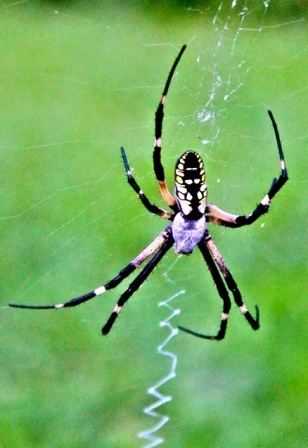- Series:Animals, Fossils, Transcript English
Job 8:13-14
“So are the paths of all that forget God; and the hypocrite’s hope shall perish: Whose hope shall be cut off, and whose trust shall be a spider’s web.”
Scientists recently examined a well-preserved spider web encased in amber. It is the oldest example of a spider web in existence and was declared to be 110 million years old.
 The researchers were eager to find out what the specimen might teach them about spider evolution. The web consisted of 26 strands of silk preserved in the amber while the pattern of the web appeared to be just like that of the modern orb-weaving spider. Three insects that were held by the web when it was encased in amber were also preserved. Interestingly, these three insects – a wasp, a fly and a mite – are the same three insects that are most often caught by modern orb spiders. Today’s orb spiders place drops of glue along their web to capture their insects. The composition of the ancient glue and the modern glue were the same; however, it turned out that the ancient spider had applied the glue in a slightly different way from its modern cousin. From this small detail the researchers tried to spin an evolutionary tale about this spider. Mankind the world over uses different techniques to achieve the same purpose.
The researchers were eager to find out what the specimen might teach them about spider evolution. The web consisted of 26 strands of silk preserved in the amber while the pattern of the web appeared to be just like that of the modern orb-weaving spider. Three insects that were held by the web when it was encased in amber were also preserved. Interestingly, these three insects – a wasp, a fly and a mite – are the same three insects that are most often caught by modern orb spiders. Today’s orb spiders place drops of glue along their web to capture their insects. The composition of the ancient glue and the modern glue were the same; however, it turned out that the ancient spider had applied the glue in a slightly different way from its modern cousin. From this small detail the researchers tried to spin an evolutionary tale about this spider. Mankind the world over uses different techniques to achieve the same purpose.
The fact remains that the ancient spider’s web design and way of making a living were identical to that of modern spiders. There was certainly no evidence of evolution here.
Prayer:
Lord, help me to more clearly see Your hand in Your creation and remember Your mercies to me every day. Amen.
Notes:
Science News, 6/24/06, p. 390, S. Perkins, “Sticky Subjects.” Photo: Golden orb-weaving spider. Courtesy of Kenneth Holley.
